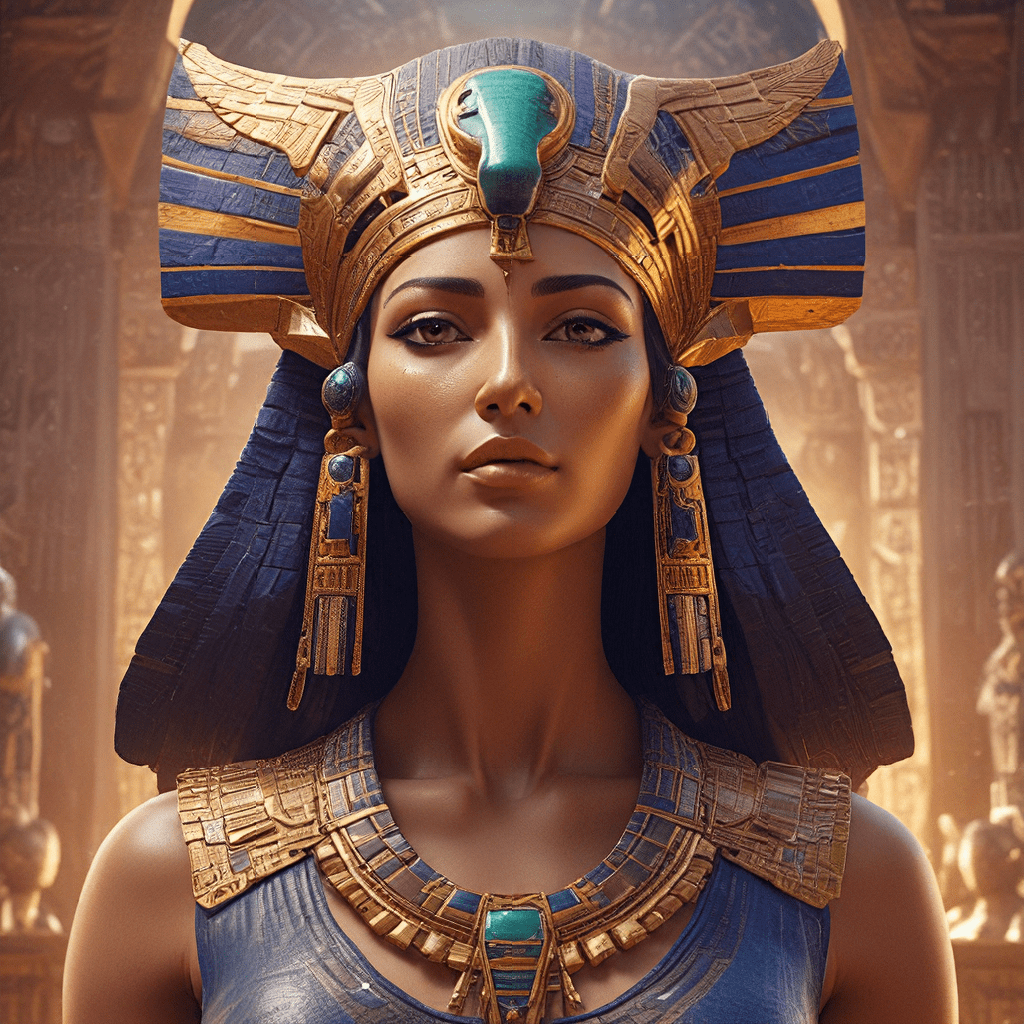## Hathor: The Goddess of the Afterlife Journey
1. Introduction: Unveiling Hathor, the Multifaceted Goddess
In the rich tapestry of Egyptian mythology, Hathor stands as a prominent figure, a goddess who embodies a multitude of roles and attributes. She is revered as the divine embodiment of love, beauty, joy, motherhood, music, dance, and even war and protection. Hathor’s presence permeates ancient Egyptian culture, leaving an enduring mark on art, architecture, literature, and religious practices.
2. Origins and Epithets: A Journey Through Time
Hathor’s origins can be traced back to the primordial goddess Bat, a powerful and ancient deity associated with the sky and the divine feminine. As Hathor emerged, she inherited Bat’s celestial powers, becoming the “Lady of Heaven” and “Mistress of the West,” the realm of the setting sun and the afterlife. Her association with the West further solidified her role as a guide and protector of the deceased.
Hathor’s multifaceted nature is reflected in her numerous epithets, each offering a glimpse into her diverse powers. She is known as “Golden One,” symbolizing her radiant beauty and her connection to the sun god Ra. Other epithets include “Mistress of the Sycamore,” referring to the sacred tree associated with protection and rebirth, and “Mistress of Music,” highlighting her connection to the arts and the joy of life.
3. Symbolism and Iconography: The Cow, the Eye, and Beyond
Hathor’s primary symbol is the cow, a creature revered for its nurturing nature and its association with fertility and abundance. The cow’s gentle and protective qualities mirror Hathor’s role as a mother goddess and a protector of women and children. The image of a cow’s head, often adorned with a sun disk, serves as a powerful visual representation of Hathor’s presence.
Beyond the cow, Hathor’s iconography encompasses a range of symbols that speak to her multifaceted nature. The sistrum, a musical instrument often depicted in her hands, is associated with joyful celebration and the power of sound. Hathor’s association with the “Eye of Ra,” a powerful symbol of the sun god’s protection, reinforces her role as a warrior goddess and a protector of the world.
Hathor’s sacred tree, the sycamore, is another important symbol. Its association with life, death, and rebirth reflects the goddess’s role as a guide for the deceased and a symbol of the eternal cycle of life. Hathor’s representations in art and iconography are rich and diverse, offering a window into the complexity and power of her divine presence.
4. Hathor and the Afterlife: Guiding Souls to the Next World
Hathor’s association with the afterlife is deeply rooted in her role as a protector and guide for the deceased. As “Mistress of the West,” she presides over the realm of the setting sun, the place where souls journey after death. She is believed to welcome the souls of the departed and help them navigate the treacherous path to the afterlife.
Hathor’s connection to the “House of Eternity,” a mythical dwelling place for the deceased, further reinforces her role as a protector of the afterlife. She is believed to ensure the well-being of souls in the next world and to provide them with comfort and guidance as they embark on their eternal journey.
5. Hathor and Rebirth: The Cycle of Life and Death
Hathor’s association with the cycle of life, death, and rebirth is intricately linked to her role as a fertility goddess and her connection to the Nile River. The annual inundation of the Nile, a vital source of life for ancient Egypt, symbolizes the cycle of renewal and rebirth. Hathor, as the embodiment of the Nile’s fertilizing power, is believed to bring life and sustenance to the land and its people.
Hathor’s role in the resurrection of the deceased further emphasizes her connection to the cycle of life and death. She is believed to guide departed souls through the underworld, offering them a chance for renewal and rebirth in the afterlife.
6. Hathor and Love, Beauty, and Joy: The Feminine Divine
Hathor’s association with love, beauty, and joy is evident in her role as a patron of music, dance, and festivals. She is believed to inspire joy and pleasure, and her presence is often invoked in celebrations and rituals. As a protector of women and children, Hathor embodies the nurturing and compassionate aspects of the feminine divine. Her association with love, beauty, and joy makes her a beloved and revered figure throughout Egyptian mythology.
7. Hathor and the Divine Feminine: A Powerful and Complex Figure
Hathor’s multifaceted nature highlights the complexity and power of the feminine divine in ancient Egyptian mythology. She is a goddess of contradictions, embodying both gentle nurturing and fierce power. She is a protector of the living and the dead, a guide to the underworld and a source of joy and beauty in the world. Hathor’s enduring legacy speaks to her importance as a cultural icon and a symbol of the enduring power of the feminine in ancient Egyptian society.




